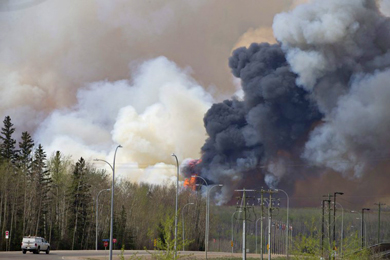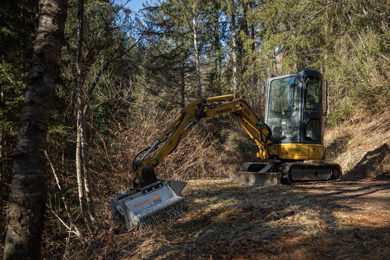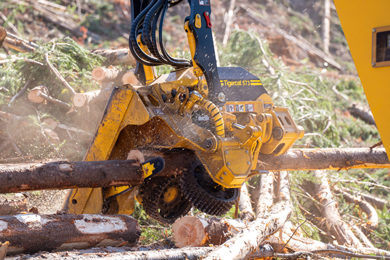Of all the business sectors in B.C. affected by this summer’s forest fires, one of the hardest hit is – for obvious reasons – the forestry sector. In what government officials say was the worst forest fire season on record, fires have scorched 1.19 million hectares in B.C. reports biv.com.
It’s still not known what the total economic impact will be, though it’s a given that the forestry sector will take a serious hit. In terms of actual damage and costs, however, it’s likely a fraction of what Fort McMurray experienced last year. Whereas the insurance claims for B.C.’s wildfires are estimated at $127 million, Fort McMurray’s totalled $3.7 billion, according to the Insurance Bureau of Canada.
Of the total area burned in B.C. this year, an estimated 53 million cubic metres of merchantable timber was lost – equivalent to one year of annual allowable cut – and a number of sawmills in the Cariboo region had to shut down, although no sawmills were lost to fire.
But will the economic fallout from natural disaster in B.C. be offset by the natural disasters that have ravaged the southern U.S.? Hurricanes in the U.S. destroyed or damaged an estimated 227,000 homes, prompting the National Association of Home Builders (NAHB) to call for a “permanent solution” to the U.S.-Canada softwood lumber dispute, which has resulted in duties placed on Canadian lumber exports – duties that the association fears will only push lumber prices even higher when rebuilding begins.
“In the aftermath of the devastating storm, demand for softwood lumber is expected to increase dramatically as homebuilders and remodellers repair and replace housing in Houston and across Texas,” NAHB chairman Granger MacDonald said at the end of August.
“This crisis makes it more important than ever that the United States quickly achieve a lasting trade agreement regarding U.S. imports of Canadian softwood lumber.” It is assumed that B.C. lumber producers will benefit from soaring demand and prices for Canadian lumber.
The most immediate concern at the moment for B.C.’s loggers and sawmill owners is getting back to work. “Some of the contractors have been shut down since June, with no revenue coming in,” said Wayne Lintott, general manager of the Interior Logging Association. “They’ve maybe got a couple of machines out on fires, but as far as the log harvesting goes, they’ve been shut down since June.”
Even some working forests on the West Coast that were untouched by fire were closed to logging. “Only about 35% to 40% of the entire contracting force on the B.C. coast was operating this summer because it was so dry,” said David Elstone, executive director of the Truck Loggers Association.
So, while some loggers were still working throughout the fire season fighting fires, they weren’t falling trees for sawmills. When combined with a curtailment of logging that typically occurs in the Interior between February and March, it all adds up to a looming fibre shortage.







